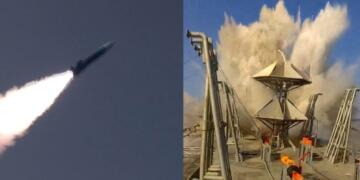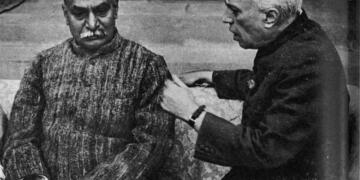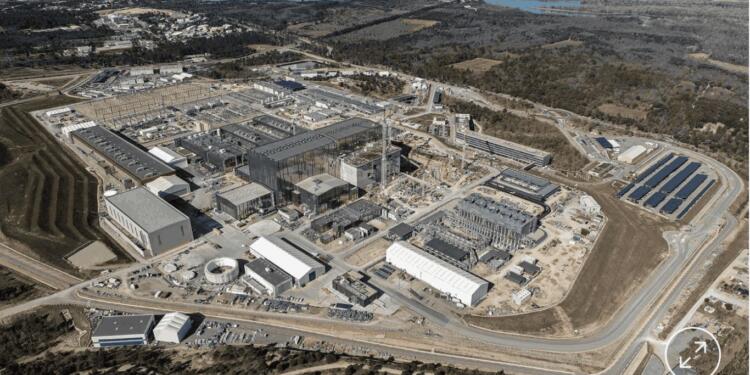Prime Minister Narendra Modi is currently on a high-level official visit to the United States of America following his visit to France where he co-hosted the Global AI Summit and took a slew of measures to boast Indian economy as well as strengthen bilateral ties with the European Nation. This include the focus on the ambitious India-Middle East Economic Corridor (IMEEC) with Marseille-Mumbai corridor at the centre of the buzz.
In France, PM Modi co-chared the AI summit with French President Emmanuel Macron. He also visited a very important and less-known site, Cadarache, the site of the International Thermonuclear Experimental Reactor (ITER), a high-science project that India is part of along with other countries.
Went to the International Thermonuclear Experimental Reactor (ITER) in Cadarache with President @EmmanuelMacron. Complimented the team working on this project, which represents a commendable step toward sustainable and limitless clean energy for the future. pic.twitter.com/LaBEpTIc3g
— Narendra Modi (@narendramodi) February 12, 2025
The visit to the ITER facility in southern France marks an important incident in India’s collaboration with one of the most ambitious scientific projects in the world. ITER, a global effort to demonstrate the feasibility of nuclear fusion as a clean and virtually limitless energy source, represents the highest level of international cooperation in science and technology.
PM Modi’s visit to the site highlights India’s commitment to the progress of clean energy solutions, besides underlining the growing role and requirement of the nation in the field of advanced scientific research. It is now the right time to know what exactly India’s contribution to the project is. Let’s first dive into India’s contribution and then understand what ITER is and how it is not only important for the participating countries but also for the world.
India’s Contribution to the ITER project
India formally joined the ITER project in 2005 and became one of the seven key members/partners alongside the European Union, China, Japan, South Korea, Russia, and the United States. India committed to providing close to 9.1% of the construction cost shares in the project, amounting to approximately $2.2 billion. This commitment is largely in the form of ‘in-kind’ assistance wherein India designs, manufactures, and delivers critical components for the reactor. ITER-India, a specially empowered project under the Institute for Plasma Research (IPR) in Gandhinagar, Gujarat, is responsible for managing India’s contributions.

India’s contributions include some of the most complex and essential systems for ITER. These include the Cryostat, the world’s largest vacuum chamber, which acts as a refrigerator to maintain the reactor at extremely low temperatures. Larsen & Toubro (L&T) has played a pivotal role in manufacturing and delivering the Cryostat components, with the final segment shipped in 2020. Additionally, India provides in-wall shielding, cooling water systems, cryogenic systems, heating systems, power supplies, and diagnostic tools. Beyond hardware, India is also contributing intellectual expertise, with over 25 Indian scientists currently working at ITER, gaining invaluable knowledge and experience in fusion technology.
What is ITER?
ITER is an experimental fusion reactor designed to replicate the energy-producing reactions that power the Sun and stars. The project aims to prove that nuclear fusion can be a sustainable and carbon-free energy source for the future. At its core, ITER uses a device called a tokamak, which uses powerful magnetic fields to confine and control plasma—a superheated state of matter where fusion reactions occur. The reactor will fuse hydrogen isotopes, deuterium, and tritium to produce energy through the principle of mass-energy conversion.

The idea for ITER was first proposed in 1985 during a summit between the United States and the Soviet Union. Over the years, the project evolved into a global collaboration involving 35 nations. ITER’s design was finalized in 2001, construction began in 2010 in Cadarache, France. The project represents a monumental engineering challenge, requiring the integration of over one million components sourced from around the world. ITER’s success could revolutionize energy production, offering a nearly inexhaustible energy source with minimal environmental impact, which will be valuable for the world. The project enhances India’s image as an increasing global power which has the ability to bring fortune to the globe.
ITER Timeline and Importance
ITER’s construction has been a massive undertaking, with the first major components arriving on-site in 2015. The central tokamak building was handed over to the ITER Organization in March 2020, marking the start of machine assembly. The first plasma is scheduled for December 2025, when the reactor will be powered up for the first time. This will be followed by a series of experiments, with full-scale deuterium-tritium operations expected to begin in 2039.
The primary goal of ITER is to produce 500 megawatts of fusion power from 50 megawatts of input heating power, achieving a tenfold energy gain. This would be the first demonstration of net energy gain in a fusion reactor, a critical milestone for the technology. Beyond energy production, ITER will also test technologies essential for future fusion power plants, such as superconducting magnets, remote maintenance systems, and tritium breeding modules. These advancements will pave the way for commercial fusion reactors, which could provide clean, safe, and virtually limitless energy.
What is Fusion power?
In order to understand this complex concept and the project, understanding the basic but complex concept of Fusion power is important. Fusion power is a method of producing electricity that mimics the process that powers the Sun, in which two tiny atomic nuclei (such as hydrogen) are forcefully combined to form a larger nucleus, releasing a large amount of energy in the process; essentially, it’s like creating energy by “glueing” tiny atoms together, making it a potentially very clean and sustainable energy source. By heating hydrogen isotopes (such as deuterium and tritium) to extremely high temperatures, they generate a plasma that can fuse to form helium, releasing energy. Fusion power has the potential to be a very clean and sustainable energy source because the fuel is widely available, and the reaction creates little waste.

Conclusion
PM Modi’s visit to ITER underlines India’s substantial contribution to this project and also underlinesthe nation’s commitment to developing clean energy technologies, which the Indian Prime Minister has always mentioned on international platforms. Both in hardware and scientific contributions, India’s input is indispensable to the success of ITER. In the face of a world fighting against climate change and struggling to address energy security, ITER is a beacon of hope for a sustainable future. The project can be a success and will hopefully transform the world’s energy map. India’s participation also ensures that the country will be at the forefront of this revolutionary technology.






























